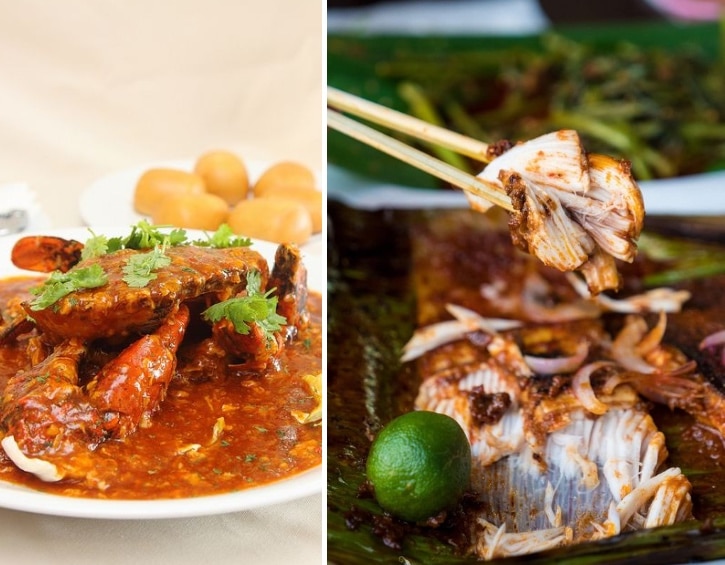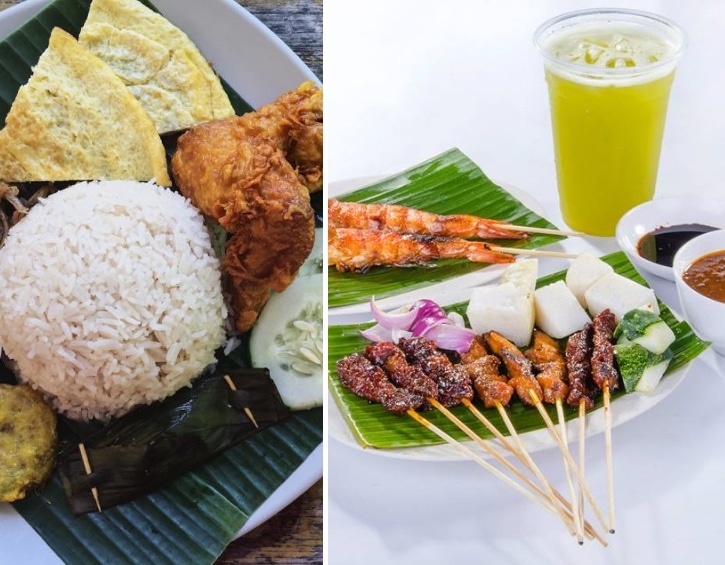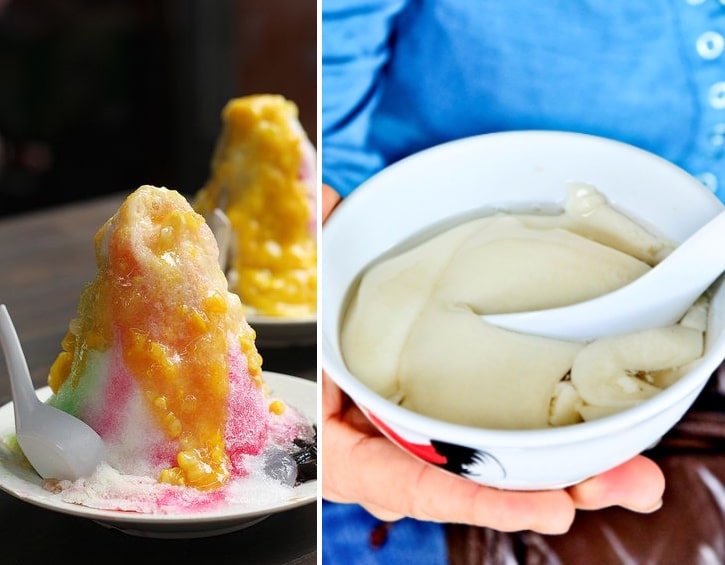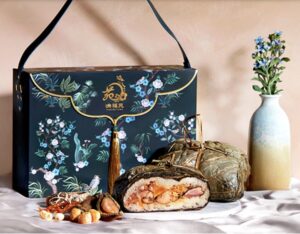







Have you ever wondered what the least nutritious dishes are at your local hawker centre? And if you are looking for a healthy hawker meal, what should you order instead?
Nutritionist Eve Persak, Nutrition Advisor for SuperNature has some juicy info for you – from the unhealthiest Asian meals on offer (Chili Crab, Char Kway Teow and Ice Kachang) to healthy hawker options you can look for instead, that will satisfy your craving for some good local hawker food. Let’s makan!
Read more: Guide to our fave hawker dishes in Singapore
Click through the gallery for our “Choose This, Not That” guide to Healthy Hawker Food!
Hawker dish: Chili Crab consists of deep fried crab legs (usually in a large vat of peanut oil and/or butter) served in a bowl of thick gravy (made from cornstarch, chili, salt sugar, spices (sometimes MSG), tomato paste/ketchup, peanut oil, and egg). This is usually served with fried mantou – soft white flour buns.
Nutrition: There is very little meat (protein) compared to sauce (fat, sodium, starch)
Choose this healthier dish instead: BBQ Sambal Stingray
Hawker dish: Stingray meat – 100 grams offers about 16 grams of protein. Higher in fat (3.5-4 g per serving) compared to some other sources of seafood, but grilled in banana leaf (rather than deep fried) The sambal is made from – belacan, spice, shallot and Indian walnut – usually served with cucumber and onion
Tip: Ask for the sambal on the side.
Hawker dish: Fish Ball Noodle Soup consists of flat white rice noodles, and fish balls with a bit of lettuce, ginger and spring onions.
Nutrition: This dish is often very high in sodium (from boullion stock) and MSG is often used to enhance the flavour. Flat white rice noodles are free of fiber and are just refined grains. The fish balls are usually made with fillet of fish combined with refined flour and fish sauce.
Choose this healthier dish instead: Sliced Fish Steamboat or Soup Teow Chew Style
Hawker dish: Sliced Fish Steamboat consists of raw slices of fresh fish (grouper, red snapper, and pomfret) added to a clear broth soup made from yams, sour plums, fish bones, and vegetables like cabbage, soybeans and fresh ginger (which flavor the broth)
Tip: Aim for varieties that don’t add the evaporated milk or sugar to the broth
Nutrition: This dish relatively free of refined grains and processed ingredients, slices of fish are leaner and higher quality source of protein given it is a wholefood compared to the “fishballs”. This dish provides a source of fibre with the mixed vegetables too.
Hawker dish: A Malaysian style dish Nasi Lemak consists of rice steamed in coconut cream served with fried anchovies, peanuts, egg, sambal and fried chicken
Nutrition: There is very little protein in the chicken wing, and mostly saturated fat (skin and the fattier wing meat); it is deep fried in peanut oil usually with a starch-based batter. Coconut milk is used as the medium by which the rice is cooked – raising the overall fat and calorie content of the dish.
Choose this healthier dish instead: Chicken Satay
Hawker dish: Chicken Satay consists of char-grilled skinless chicken meat grilled on skewers. The meat is brushed lightly in a marinade of oil and spices (turmeric, coriander, shallot, garlic, lemongrass, chili, salt (and sometimes sugar); served with cucumber, onion and a peanut sauce on the side.
Nutrition: As the skin is usually removed and leaner cuts of chicken are used – the overall animal fat content is lower. The marinade uses relatively healthful herbs and spices; grilling is preferred to deep frying, and sauce is served on the side.
Tip: opt for the breast meat rather than the thigh or wing, use just a small amount of peanut sauce or omit it.
Hawker dish: Char Kway Teow is made with stir fried noodles and egg, dark soy, shrimp paste, sweet sauce, soy sauce, chili, Chinese sausage, blood cockles – many also have crispy cubes of deep fried lard as a garnish.
Nutrition: Estimated to have around 800-1000 kcal per serving (half of the average daily requirement for an adult). This dish is also high in sodium (soy sauce), sugar, cholesterol, saturated fat (sausage, lard) and relatively void of fiber. Not really any way to make this dish healthier except to keep the portion small, eat lighter the rest of the day, and wash it down with lots of water.
Choose this healthier dish instead: Meat Bone Tea (Bak Kut Teh) translated as ‘meat bone tea’ – this dish is traditionally made with rib and other pork bones simmered in a complex broth of herbs and spices (such as white peppercorn, garlic, cinnamon, clove, star anise, salt) and some recipes include Chinese & shiitake mushrooms and goji berries – often served with preserved mustard greens, braised tofu and/or dumplings or white rice.
Nutrition: Long simmer times have the same therapeutic benefits of bone broths – breaking down the cartilage and connective tissue for a readily digested and absorbed source of beneficial amino acids. Depending upon the cut of pork used, the broth can be quite oily – so skim the oil or spoon from the bottom of the bowl. Pass on the white rice/dumplings in favor of the greens or tofu.
Hawker dish: Kaya Toast is a very common breakfast in SG – white bread, toasted with a spread made from coconut milk, sugar, egg, and flavored with pandan leaf – often butter is put on the bread as well. Local, homemade varieties are often slightly more benign than store-bought as processed brands often include stabilizers and preservatives. Local coffee (kopi or kopi C) – powdered coffee (which offers none of brewed-from-bean coffee’s antioxidant benefits), condensed milk (sweetened and concentrated dairy milk powder), and refined sugar complete the breakfast.
Nutrition: There’s no fiber, little to no protein, high refined grains and sugar, an in general highly processed. This combination is likely to spike your blood sugar levels quickly and leave you feeling hungry again very soon after eating
Choose this healthier dish instead: Soft boiled eggs + Toast + Black Tea
Most restaurants that offer kaya toast offer a set with toast, boiled egg, and coffee/tea – however you can also order a la carte at most of these venues as well.
Nutrition: By eating eggs alone, you’ll have complete protein and no processed ingredients or added sugars. Having eggs in the morning (as opposed to refined grains) has been shown to aid weight loss efforts. If you have the toast, the egg serves as the moisturizer. The black tea (depending on the type of tea) may offer some antioxidant benefits and it has less overall caffeine.
Hawker dish: Ice Kachang sees ground, shaved iced atop other miscellaneous ingredients from red bean, palm seed, to agar agar jelly/grass jelly . It is then topped with evaporated/condensed milk, syrups (red rose, sarsi), coconut sugar, chocolate, or even ice cream.
Nutrition: The traditional forms use more traditional ingredients to produce color (like rose, sarsi, pandan), however newer varieties are highly processed using processed syrups, food colorings, etc. Outside of protein/fiber from the small scoop of beans, there is very little nutritional value.
Choose this healthier dish instead: Tau Huay
Tau Huay is a bean curd tofu dessert with syrup – the beancurd tofu is soft in texture and has slightly granular mouth-feel and can be eaten hot or cold.
Nutrition: Look for more traditional varieties as newer variations add gelatine and stabilizers for a smoother mouth-feel. Newer varieties must be eaten cold, as the structure will “break” with the added gelatine. Compared to Shaved Ice, this is higher in protein, less processed, and only two ingredients (rare for a dessert or any dish at hawker stalls). Tip: try to focus on the beancurd puree and leave some of the syrup in the bowl.
Hawker dish: It’s hard to find dishes that feature FRESH produce in many hawker centres – this Rojak fruit salad has Chinese/Malay/Indian roots. It starts with a nice mixture of fresh fruits and vegetables (radish, pineapple, cucumber, bean sprouts) – then goes downhill with fried dough fritters and then tossed in a heavy coating of fermented prawn paste, palm sugar, chili and peanuts).
Nutrition: Very high in sodium and added sugar (which shouldn’t be necessary as fruit is naturally sweet).
Tip: Aim for the variants without dough fritters and if possible, ask for the sauce on the side
Choose this healthier dish instead: Durian
Definitely an acquired taste (pungent aroma), but considered SG’s national fruit and the “king of fruits”.
Nutrition: Given this is a wholefood there are no additives. Durian is extremely nutrient dense and satisfying and very high in fiber (4 grams in a 100 gram portion – fiber is understood to promote regularity), offers protein (1.5 grams – which is higher than most fruits), higher in fat content but plant-based, free of cholesterol, rich in vitamins C & B and a great source of minerals – potassium especially which is great for blood pressue control and electrolyte balance.
Lead image by Noahs Knight via Unsplash
Chilli Crab image sourced via Pinterest
Sambal Stingray image by Migrationology sourced via Pinterest
Fish Ball Noodle Soup image by Encik Tan
Steamboat image by ieatishootipost
Nasi Lemak image by JC Nasi Lemak
Satay image by Satay by The Bay
Char Kway Teow image by AiPing of Curious Nut sourced via Pinterest
Bak Kut Teh image by NG AH SIO Bak Kut Teh
Kaya Toast image by Ya Kun Kaya Toast
Soft Boiled Eggs image by Feast to The World
Ice Kacang image by 6 Bittersweets sourced via Pinterest
Tau Huay image by Calvin Teo sourced via Goody Feed
Rojak image by Bear Naked Food sourced via Pinterest
Durian image sourced via Pinterest






 View All
View All




 View All
View All







 View All
View All





